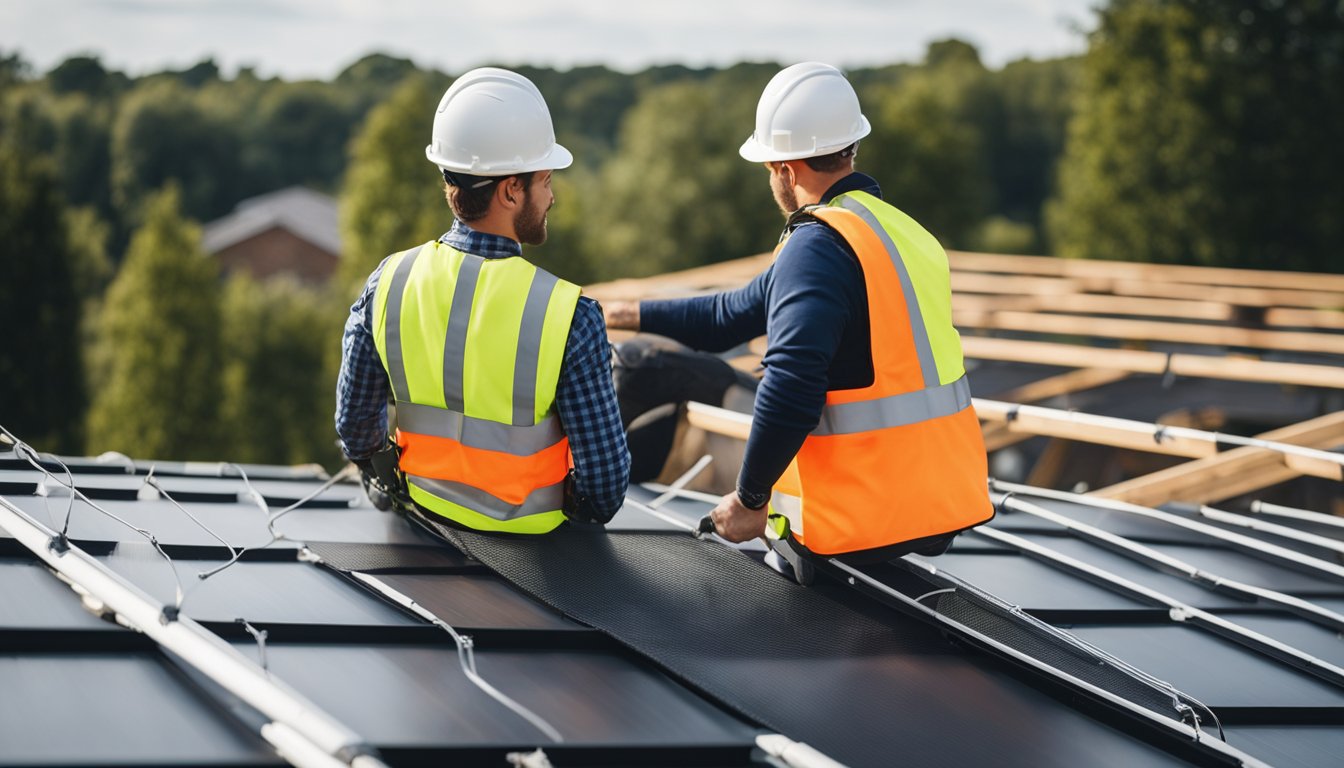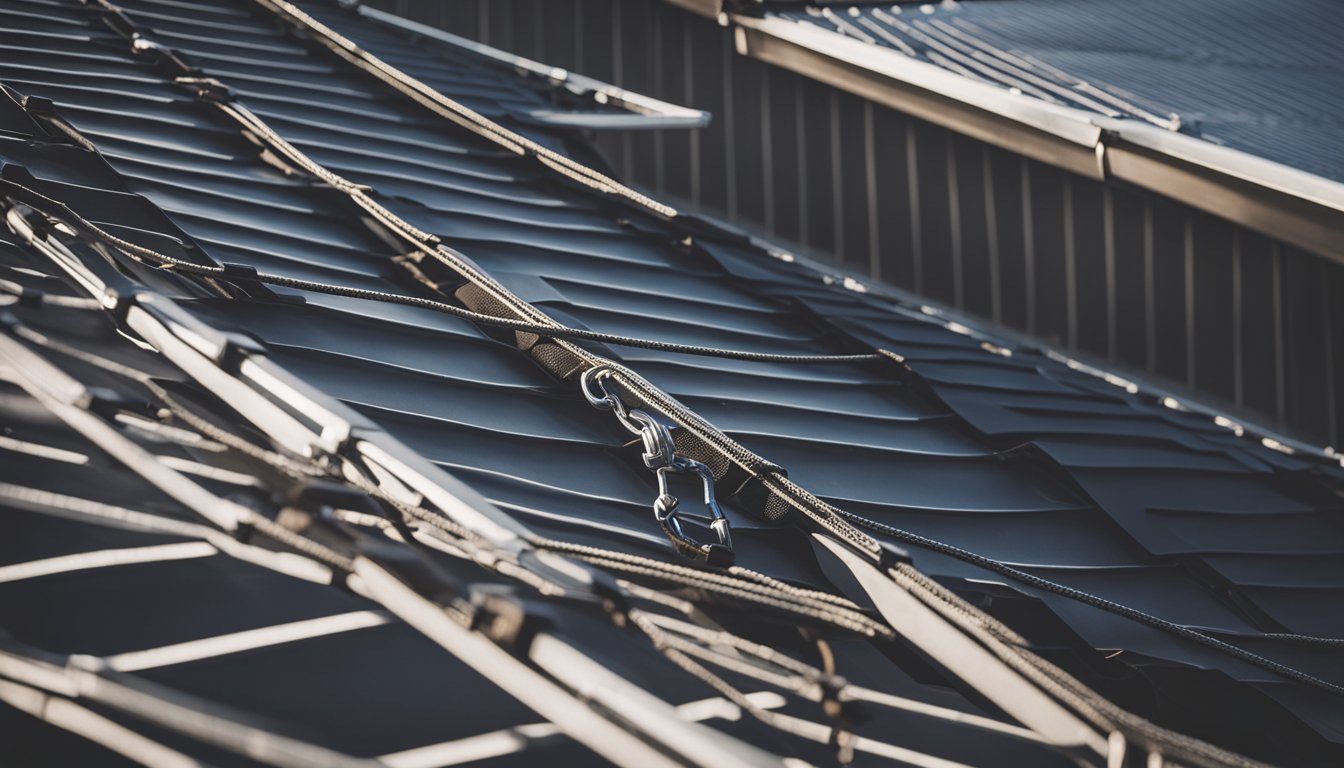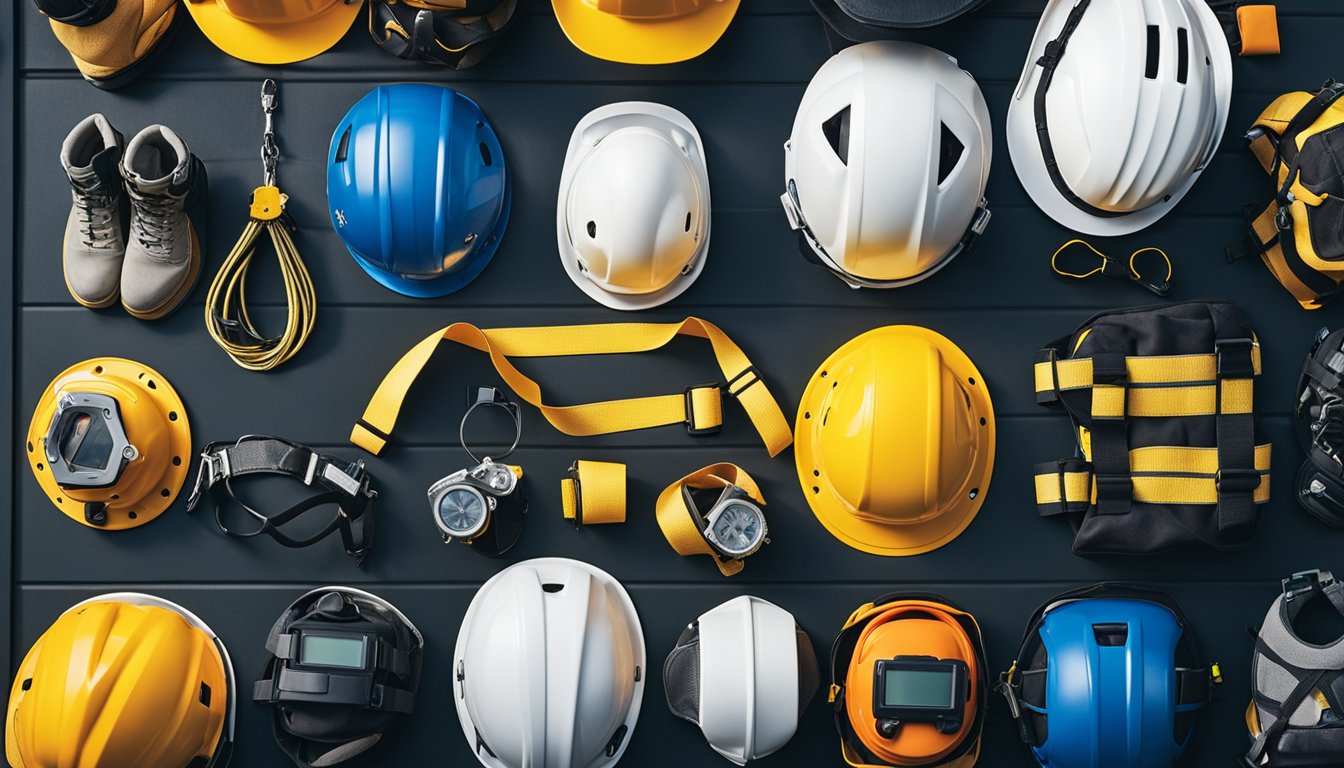Late updated: 08 Oct 2024 11:10
Written by: Oliver Bennett
Modern Roofing Safety Equipment for UK Homeowners: Essential Tips for 2024
Exploring the vast landscape of roofing safety, we find a myriad of tools and technologies designed to protect homeowners. Modern roofing safety equipment not only ensures compliance with UK regulations but also offers peace of mind through its reliability and simplicity. Embracing the latest in fall protection and roof access solutions contributes significantly to safeguarding both professional workers and DIY enthusiasts alike.

Safety systems have evolved dramatically over the years, with innovative designs that cater to all roof types. From overhead cable systems to single anchor point setups, each solution offers a unique way to address the inherent risks of working at heights. These advancements emphasise the need for vigilance and adherence to safety standards, ensuring that every roofing project, regardless of its size or complexity, can be conducted safely.
As we navigate these advancements, we aim to provide a comprehensive overview of the essential equipment and practices every UK homeowner should consider. By focusing on both the materials and methods available, we hope to inspire confidence and knowledge about roofing safety, empowering us all to take the necessary steps to protect our homes and ourselves.
Key Takeaways
- Modern roofing safety equipment promotes compliance and peace of mind.
- Innovations cater to different roof types and enhance safety standards.
- Essential equipment information empowers safe roofing practices.
Understanding Roof Safety Equipment

In our exploration of roof safety equipment, we focus on crucial components designed to protect homeowners and workers. These include fall protection systems, edge protection, safety harnesses, and various roof access solutions.
Fall Protection Systems
Fall protection systems are foundational for any rooftop safety plan. These systems are essential as falls are one of the most significant risks when working at heights. The systems typically include personal fall arrest systems, safety nets, and engineered horizontal lifelines. Personal fall arrest systems, comprising a full-body harness worn by the user, connect to an anchor point via a lanyard. Proper installation and consistent usage of these systems can significantly mitigate risks.
Safety nets are often employed in areas where traditional fall arrest systems may not suffice. Installed beneath the work area, they catch potential fall victims, preventing contact with the ground. Horizontal lifelines, on the other hand, allow user mobility across the work area while maintaining continuous attachment. Each of these components plays a critical role in providing comprehensive fall protection.
Edge Protection and Guardrails
Edge protection and guardrails serve as a physical barrier, preventing accidental falls from roofs. They are particularly useful in scenarios involving multiple workers, as they create a boundary that protects anyone on the rooftop. Guardrail systems, which are freestanding and do not require fixing through the roof membrane, are effective as they offer continuous edge protection.
These systems consist of several horizontal rails connected by vertical posts positioned around the roof’s perimeter. Easy to install and remove, they provide a durable and reliable solution adaptable to various roofing configurations. Our experience shows that the right edge protection dramatically reduces the potential for accidents, offering peace of mind while working at heights.
Safety Harnesses and Lanyards
A safety harness is a vital component of personal protective equipment. Worn by the user, it distributes fall arrest forces safely across the body. Full-body harnesses are designed to envelop the user securely, with attachment points for connecting a lanyard. Lanyards link the harness to an anchor point, limiting the distance a person can fall and reducing injury risk.
For effective performance, inspect harnesses and lanyards regularly for wear and tear. It's important they comply with current regulations and standards. Training in proper fitting and usage ensures they function as intended, leveraging maximum protection while maintaining comfort.
Roof Access Solutions
Safe, efficient access is essential when working on a roof. Roof access hatches and fixed ladders are common solutions allowing secure entry to roof areas. Access hatches provide an enclosed, safe passage through the building envelope to the roof. They must be robust, weather-resistant, and equipped with secure locking mechanisms to prevent unauthorised access.
Fixed ladders offer a permanent access route and should be equipped with safety features such as backguards to prevent falls. Regular maintenance ensures they remain in optimum condition. By employing these roof access solutions, we can facilitate safer, easier movement to and from rooftop workspaces, enhancing both safety and productivity.
Implementing a comprehensive system that includes these elements significantly improves the safety of everyone involved in roofing tasks.
Implementing Roofing Safety Measures

Ensuring safety during roofing projects is paramount. By prioritising the use of protective gear, proper tool handling, adherence to regulations, and planning for emergencies, we can significantly mitigate risks.
Personal Protective Equipment
Equipping oneself with the right personal protective equipment (PPE) is essential for safety on a roof. Non-slip footwear is a must to prevent slipping on precarious surfaces. High-visibility clothing ensures that everyone is easily seen, especially in busy environments or low-light conditions.
Helmets protect from head injuries due to falling objects, while safety glasses shield eyes from debris and dust. Additionally, knee pads provide comfort and protection while working on hard surfaces. These items collectively minimise risk and enhance safety.
Safe Use of Roofing Tools
The correct use of roofing tools is vital to avoid accidents. Nail guns require handling with care, as they can cause serious injuries. Regular cleaning and maintenance of tools ensure they remain in good condition and function safely.
Ladders should be sturdy and inspected regularly for any signs of wear or damage. It's important to avoid overloading or leaning too far, which can cause balance issues. Using tools safely helps prevent incidents and ensures smoother project execution.
Compliance with Safety Standards
Adhering to relevant safety standards is non-negotiable. The Health and Safety at Work etc. Act 1974 outlines key requirements for working at height. We must ensure that all workers operate under regulations that prevent accidents.
Safety nets and guardrails offer additional protection by providing barriers and preventing falls. Ensuring compliance not only keeps workers safe but also avoids potential legal issues. Implementing these measures promotes a safer working environment.
Emergency Planning and Training
Effective emergency planning is crucial in roofing work. All personnel should be trained in identifying hazards and reacting to emergencies swiftly. Regular safety drills can prepare teams to handle unexpected incidents competently.
Training should also highlight the use of safety equipment and the importance of maintaining clear communication. Understanding emergency protocols ensures quick and coordinated responses, mitigating the impact of accidents and protecting all involved.
Frequently Asked Questions

We address common queries related to roofing safety equipment for UK homeowners. Our focus includes recommended safety items, budget considerations, and leading-edge protection systems for residential roofs.
What are the top recommended safety equipment items for UK homeowners undertaking roofing projects?
Homeowners should invest in high-quality harnesses, roof ladders, and non-slip footwear. These tools are vital to ensure stability and prevent falls during roofing tasks. We also advise using helmets and gloves for additional protection.
How much should homeowners expect to invest in reliable modern roofing safety equipment?
The cost of reliable roofing safety equipment can vary. Homeowners should budget between £200 and £500, depending on the quality and range of equipment selected. Investing in durable equipment is advisable for long-lasting protection.
Which roof safety line systems are deemed most effective for residential properties in the UK?
For residential properties, vertical lifeline systems offer robust safety. They provide a continuous connection for workers, effectively reducing fall risks. Systems like those from Heightsafe are well-regarded in the industry for their reliability.
What portable edge protection solutions are available for enhancing safety during home roofing jobs?
Portable guardrail systems are a popular choice. These guardrails can be easily installed along roof edges to create a secure barrier. Models such as KeeGuard provide excellent flexibility and reliable protection, meeting safety standards.
What considerations should be made when selecting roof edge protection for private residences?
When selecting roof edge protection, homeowners should ensure the system is compatible with their roof type. It's also important to assess the ease of installation and removal, as well as compliance with UK safety regulations.
How do Safesite's security solutions fit into the modern roofing safety protocols for UK homes?
Safesite offers comprehensive roofing safety solutions that align with modern protocols. Their range includes fall prevention systems and training services, helping homeowners maintain compliance with safety standards. This integration enhances safety measures significantly.
